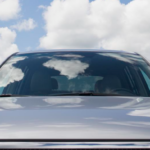No matter what vehicle a young driver chooses, the cost of insurance will be excessive. It’s common for drivers under the age of 25 to see vehicle insurance rates that are twice as high as those for drivers older in age.
However, young drivers sometimes face higher prices for van insurance too. It’s also more difficult to get no deposit van insurance because most insurers won’t cover drivers younger than 21.
In order to purchase some types of insurance, you may need to be at least 25 years old. So, how can inexperienced motorists get cheap insurance for a van? You don’t have to worry as QuoteRadar is here to help you find the best deal.
Why Is Van Insurance For Young Drivers So Difficult To Acquire?
Due to their higher accident risk, insurance companies charge young drivers extra. Van drivers under the age of 25 have a higher accident rate than their more experienced elder co-workers.
Because of this, many insurance firms do not consider it profitable to insure teenage van drivers. For this reason, very few insurance providers will cover van drivers under the age of 25. Although it is reassuring that some insurance providers now accept drivers as young as 21, the fact remains that van drivers who are 21 and up still face extraordinarily costly premiums no matter whether they show less of a risk.
Getting Best Van Insurance Deal for Young Drivers:
Since there are many variables to think about, getting affordable van insurance that provides adequate coverage can be challenging.
1. Shop Around:
The renewal of your van insurance policy with your current provider is the quickest option, but it might not be the most cost-efficient. Price comparison tools considerably facilitate the laborious task of looking through insurers’ sites for competitive quotes.
Don’t just go with the lowest option when it comes to van insurance; be sure all the policies you’re comparing provide the same level of protection.
2. Tell The Truth:
Lying on an insurance application, even if it’s a small lie, can cost you money if you ever need to file a claim. Details such as overnight parking spots and annual mileage should be included.
3. Hunt For Discounts:
There are many insurance companies offering premium discounts and no deposit van insurance. The most noticeable is the no-claims discount, with which your premiums are reduced after a predetermined period during which you have not filed a claim.
No-claims discounts are transferable from cars to vans with some insurance carriers. It’s possible to save money on van insurance if the policyholder insures many cars with the same company.
What Factors Can Affect Your Premium?
When determining a premium, insurers take a number of factors into account, many of which will be addressed in the initial set of questions requested by your insurer prior to providing a quote. Here are a handful of the most frequent:
· Van Insurance Groups:
Van insurance is segmented in the same way that vehicle insurance is, with several categories for various vehicle styles and sizes. Van insurance groups take into consideration factors such as the cost of parts and servicing, how efficiently the van runs, the size of the van’s engine, how much it weighs, and how safe it is.
· Annual Mileage:
When people drive less, they are less likely to be involved in collisions. Do not disregard this, as doing so could terminate your insurance coverage.
· Occupation:
The premium young drivers pay may be affected by the kind of work they are in. For example, delivering goods in your vehicle is naturally more dangerous than other jobs.
· Address:
Statistics, like as the number of car thefts and the volume of daily traffic, are used by insurers to assess the danger in your neighbourhood. It’s possible that urban residents will have to pay a larger premium than rural residents.
It’s likely that younger age group will pay greater premiums. The good news is that there are things you can do to potentially lower your premium payments. If you want to save money on insurance, one option is to buy a van that is in a lower insurance group.








